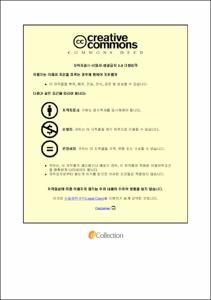부산 낙동 델타지역의 충적 대수층에 대한 대수층 상수 결정 연구
- Alternative Title
- Determination of aquifer parameters for the alluvial aquifers at the Nakdong Delta Area in Busan City, Korea
- Abstract
- Determination of aquifer parameters for the alluvial aquifers
at the Nakdong Delta Area in Busan City, Korea
Minji Kim
Department of Pukyong National University
Abstract
In this study, sediments were collected from alluvial aquifers in the Nakdong River Delta area. The physical properties (grain size, density, specific gravity, porosity) and aquifer parameters (hydraulic conductivity, effective porosity, longitudinal dispersivity) were determined from grain size analysis, laboratory and field permeability test and laboratory tracer test. Among 19 samples, the number of muddy sands (mS) was seven, and sand (S) was five. The others were (g)mS, sC, (g)S, sM, and C. The average grain size was distributed between 0.34 and 0.00088 mm. The sediment samples for OW-7 47∼48 and 49∼50 m were classified into moderately sorted, the remainders were classified into poorly sorted. The coefficients of uniformity and curvature for OW-5 33∼34 m was 200 and 2.88, respectively. Also, The coefficients of uniformity and curvature for OW-7 9∼10 m were 309.09 and 1.07, respectively. Thus, only two sediment samples were classified into well grading.
The hydraulic conductivity was calculated from empirical formulas using accumulative curve, and was also determined through falling head permeameter test. The correlation coefficient between hydraulic conductivities calculated from Kozeny-Carman and effective grain sizes (d10) was 0.89, indicating a very high correlation. Slug Test showed that the permeabilities of the upper sand in unconfined aquifer and gravel layer in confined aquifer was 1.7∼1.9 m/day, and 150∼300 m/day, respectively.
The comparison between hydraulic conductivities from permeameter test and those from empirical formula represented that the value of permeameter test was smaller than that of the empirical formula. This difference resulted from the amount and the state of sediment samples used for test. The disturbed samples were used for particle size analysis, while the undisturbed samples were used for permeameter test. It suggests that the estimation of permeability using only the grain size makes large errors.
To determinate dispersivity, laboratory column experiments were carried out using bromide solution. From breakthrough curves, dispersivities were determined to be 0.49∼3.03 cm. Also, the effective porosity and average linear velocity were determined through the laboratory column test. The range of effective porosity was 13.1%∼35.5%, and average linear velocity was ∼ . In general, in case of large grain size, the average linear velocity becomes large, and the dispersivity becomes small. However, there were some different results in this study. It was considered to be due to heterogeneity of aquifer materials according to the depth. Because the composition of the sediment particles is variable in the poorly sorted samples, their heterogeneity is much larger. Thus, it is difficult to obtain ideal hydraulic conductivity values. In addition, it needs to consider the pressure according to the depth for deep-seated samples to obtain more reliable hydraulic conductivities.
- Issued Date
- 2015
- Awarded Date
- 2015. 8
- Type
- Dissertation
- Publisher
- 부경대학교 대학원
- Alternative Author(s)
- Minji Kim
- Affiliation
- 부경대학교 지구환경시스템과학부(지구환경과학 전공)
- Department
- 대학원 지구환경시스템과학부지구환경과학전공
- Advisor
- 정상용
- Table Of Contents
- Contents ⅰ
List of Figures ⅲ
List of Tables ⅴ
Abstract ⅵ
Ⅰ. 서론 1
1.1 연구배경 1
1.2 연구목적 2
1.3 연구지역 3
1.3.1 연구지역 대수층 현황 4
Ⅱ. 토양 특성 분석 6
2.1 입도분석 6
2.2 입도분석 결과 6
2.2.1 누적분포곡선, 가적분포곡선 9
2.3 물성측정 18
2.3.1 물성분석 결과 19
Ⅲ. 투수계수 산출 21
3.1 경험식에 의한 수리전도도 산정 21
3.2 실내 투수시험 27
3.2.1 정수두 투수실험법 28
3.2.2 변수두 투수실험법 29
3.2.3 투수시험 결과 30
3.3 슬러그 테스트 35
3.3.1 방법 35
3.3.2 현장 투수 시험 결과 40
Ⅳ. 분산지수 산출 46
4.1 수리분산 이론 46
4.2 실험 방법 48
4.3 실험결과 49
4.3.1 농도이력곡선 49
Ⅴ. 결론 55
참고문헌 58
요약 (Korean) 62
감사의글 64
- Degree
- Master
- Appears in Collections:
- 대학원 > 지구환경시스템과학부-지구환경과학전공
- Files in This Item:
-
-
Download
 부산 낙동 델타지역의 충적 대수층에 대한 대수층 상수 결정 연구.pdf
기타 데이터 / 4.71 MB / Adobe PDF
부산 낙동 델타지역의 충적 대수층에 대한 대수층 상수 결정 연구.pdf
기타 데이터 / 4.71 MB / Adobe PDF
-
Items in Repository are protected by copyright, with all rights reserved, unless otherwise indicated.